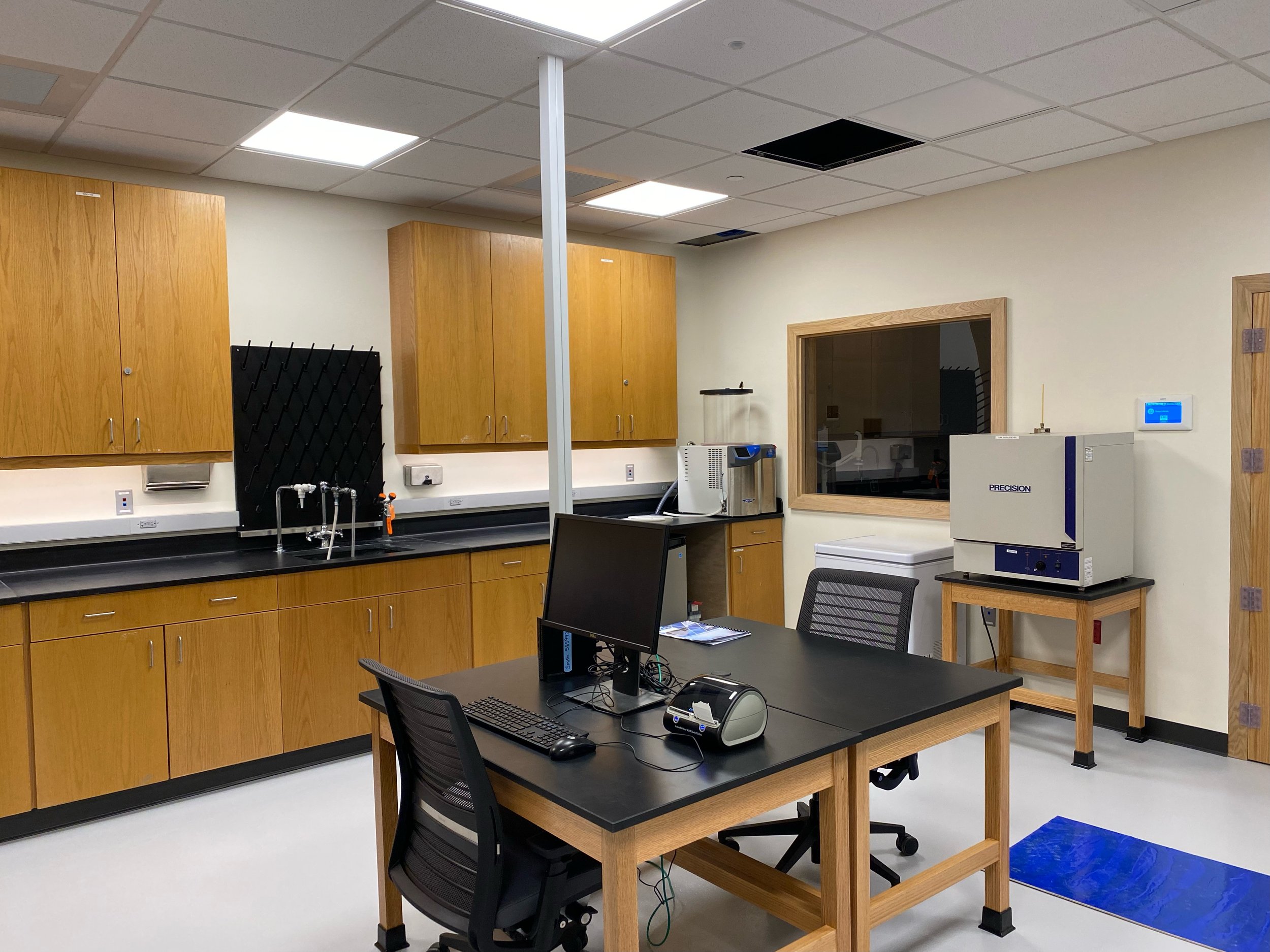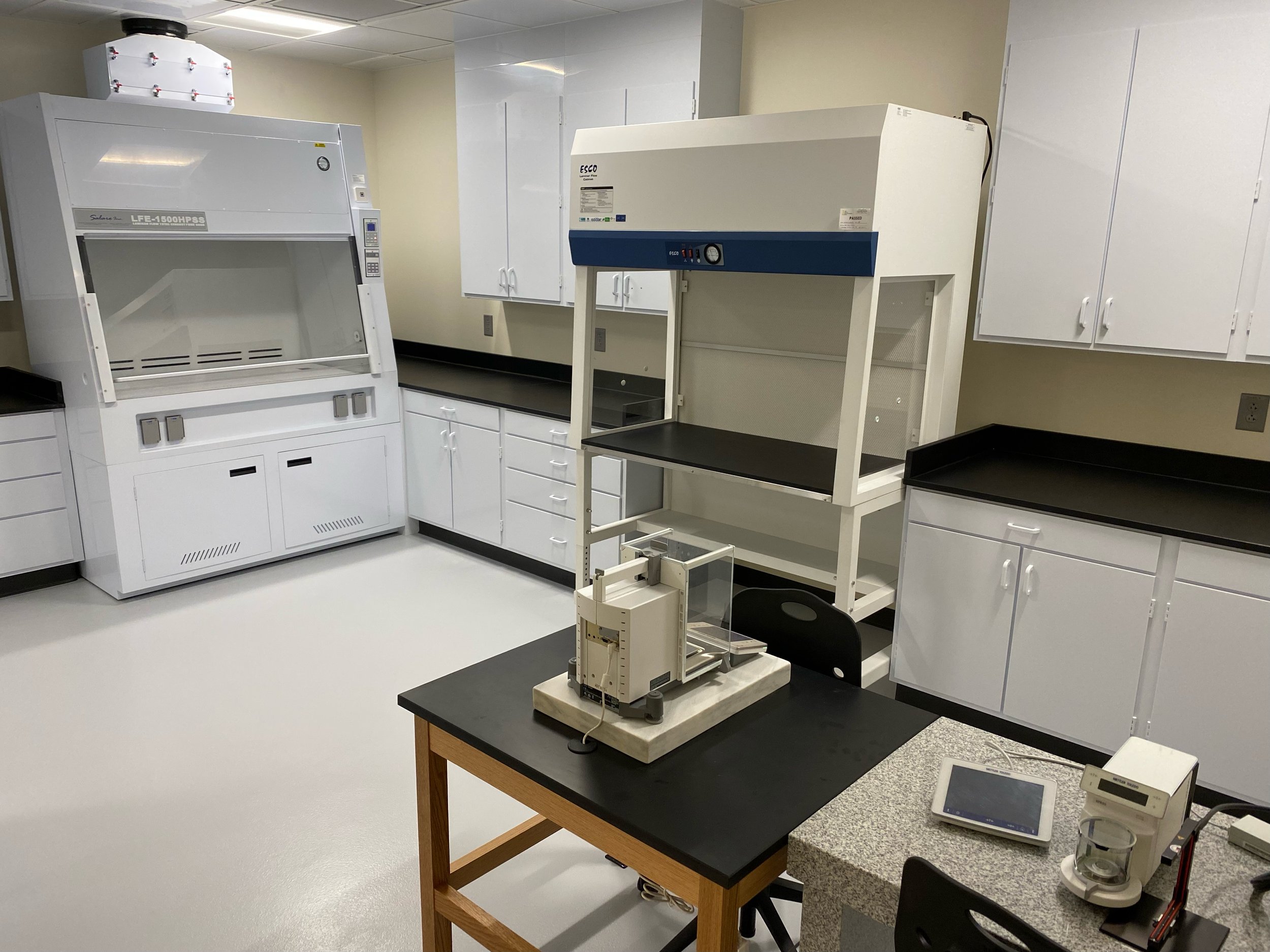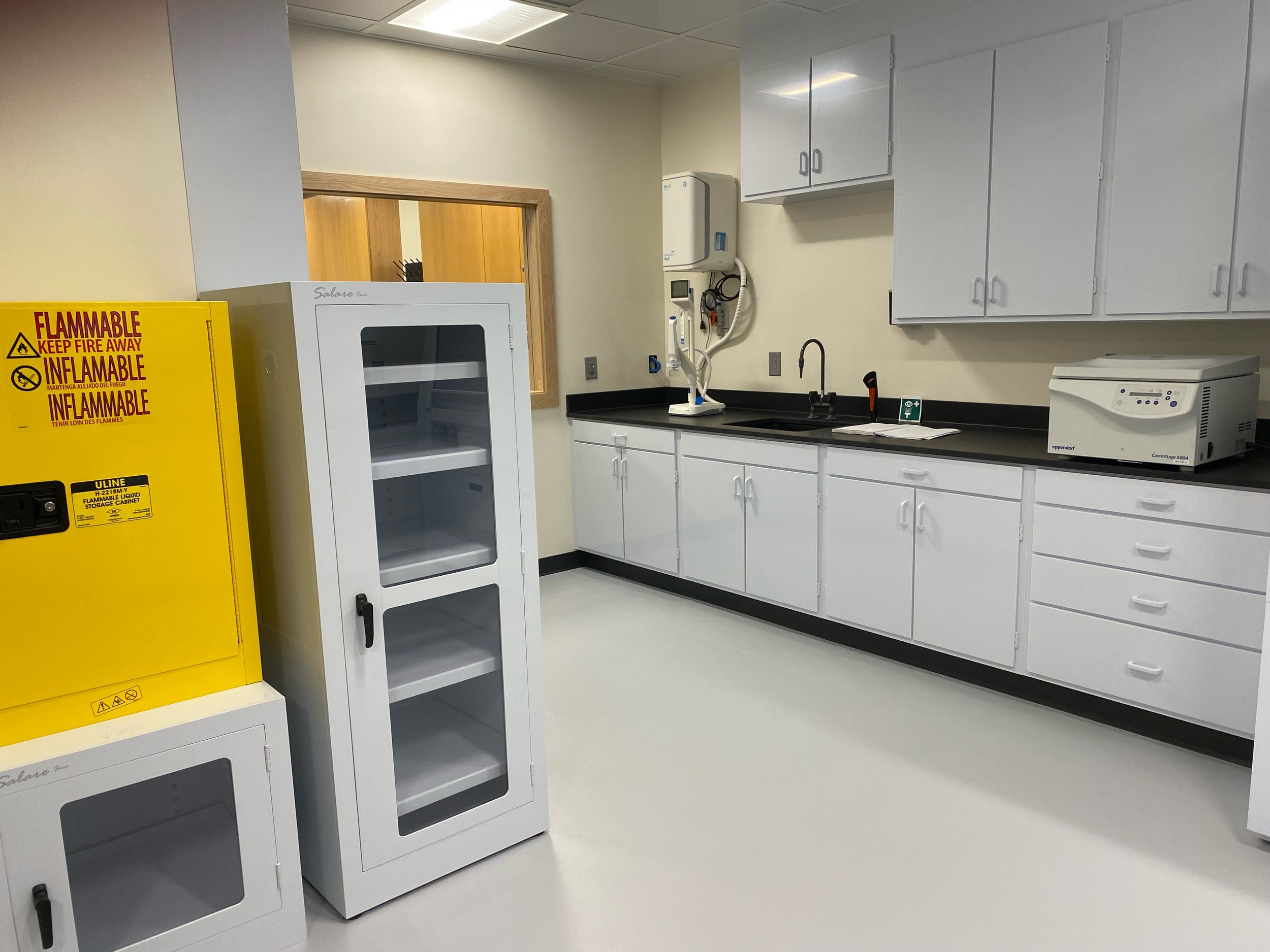The FOR@M sediment prep lab.
Anne Thompson and Maya Millner in the trace metal clean lab, Summer 2024
Clean lab hoods and balances.
Clean lab cont.
icap Q ICP-MS
The Facility for Oceanographic Research @ Middlebury or FOR@M is named for the microfossils (foraminifera) that form the basis for much of our work.
The lab is set up to facilitate undergraduate work on research projects focused on reconstructing past ocean/climate system changes with the goal of elucidating forcings & feedbacks.
The FOR@M, completed in August of 2023, has two components, the sediment prep lab and the trace metal clean lab. These components enable micropaleontological and geochemical research and are both critical to the lab’s mission.
The sediment prep lab is for curation, separation, and characterization of marine sediments and their constituents and contains:
Four Zeiss Stemi 508 stereo microscopes for foram identification and picking
Two Zeiss Axiocam microscope cameras for teaching foraminifera identification and specimen photography
Sample refrigerator and freezer
6L Freeze dryer
Oven for drying samples
Analytical balance
“MixMaster2020” for sediment disaggregation
Sieves for separating sediment size fractions
Sample storage (micropaleo and bulk)
Computer workstations + printer
The clean lab is for total marine sediment digestion for major element and U-series analysis, and cleaning microfossils for trace metal analysis. The lab has a gowning room, is held at positive pressure relative to the rest of the lab complex, and is designed to function at ISO 6 (Class 1000). The lab contains:
Vertical laminar flow hood equipped with a HPSS scrubber (ISO 4)
Horizontal HEPA-filtered flow bench (with boron-free filters)
Milli-Q IQ 7000 dispenser
Mettler Ultra Microbalance XPR2U for individual foram mass measurements
Analytical balance
Sonicators, centrifuges, hotplates etc.
Major element analysis of marine sediments is done in-house using the ECSC department’s Thermo Fisher iCAP Q ICP-MS and we are in the process of developing methods for analyzing trace element ratios (e.g. Mg/Ca and B/Ca) using the instrument. We currently collaborate with labs at Columbia University’s Lamont-Doherty Earth Observatory to run stable isotope and U-series analyses.





